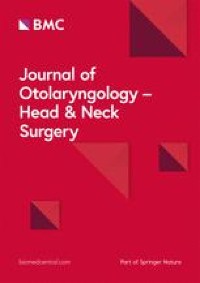|
Medicine by Alexandros G. Sfakianakis,Anapafseos 5 Agios Nikolaos 72100 Crete Greece,00302841026182,00306932607174,alsfakia@gmail.com,
Αρχειοθήκη ιστολογίου
-
►
2023
(272)
- ► Φεβρουαρίου (141)
- ► Ιανουαρίου (131)
-
▼
2022
(2066)
- ► Δεκεμβρίου (80)
- ► Σεπτεμβρίου (170)
-
▼
Φεβρουαρίου
(190)
-
▼
Φεβ 22
(7)
- Effects of a tongue training program in Parkinson'...
- Transcervical styloidectomy for Eagle syndrome
- Applicability of Transnasal Echography for Identif...
- Clinical outcomes of a cohort of 271 patients with...
- Introduction and expression of PIK3CAE545K in a pa...
- Selumetinib Plus Adjuvant Radioactive Iodine in Pa...
- Cochlear Fluid Spaces and Structures of the Gerbil...
-
▼
Φεβ 22
(7)
- ► Ιανουαρίου (203)
-
►
2021
(7399)
- ► Δεκεμβρίου (186)
- ► Σεπτεμβρίου (472)
- ► Φεβρουαρίου (851)
-
►
2020
(2517)
- ► Δεκεμβρίου (792)
- ► Σεπτεμβρίου (21)
- ► Φεβρουαρίου (28)
-
►
2019
(12076)
- ► Δεκεμβρίου (19)
- ► Σεπτεμβρίου (54)
- ► Φεβρουαρίου (4765)
- ► Ιανουαρίου (5155)
-
►
2018
(3144)
- ► Δεκεμβρίου (3144)
Ετικέτες
Πληροφορίες
Τρίτη 22 Φεβρουαρίου 2022
Effects of a tongue training program in Parkinson's disease: Analysis of electrical activity and strength of suprahyoid muscles
Transcervical styloidectomy for Eagle syndrome
|
Applicability of Transnasal Echography for Identification of Internal Carotid Artery
|
Clinical outcomes of a cohort of 271 patients with lung metastases from differentiated thyroid carcinoma
|
Introduction and expression of PIK3CAE545K in a papillary thyroid cancer BRAFV600E cell line leads to a dedifferentiated aggressive phenotype
|
Selumetinib Plus Adjuvant Radioactive Iodine in Patients With High-Risk Differentiated Thyroid Cancer: A Phase III, Randomized, Placebo-Controlled Trial (ASTRA)
|
Cochlear Fluid Spaces and Structures of the Gerbil High-Frequency Region Measured Using Optical Coherence Tomography (OCT)
|
Αναζήτηση αυτού του ιστολογίου
! # Ola via Alexandros G.Sfakianakis on Inoreader
-
Does CBD Oil Lower Blood Pressure? This article was originally published at SundayScaries." Madeline Taylor POSTED ON January 13, 20...
-
The device, cleared in Europe a couple of years ago, is used to ablate cardiac tissue as part of treatment for atrial fibrillation. It featu...
-
Overdue: a US advisory board for research integrity Overdue: a US advisory board for research integrity, Published online: 11 February 201...




